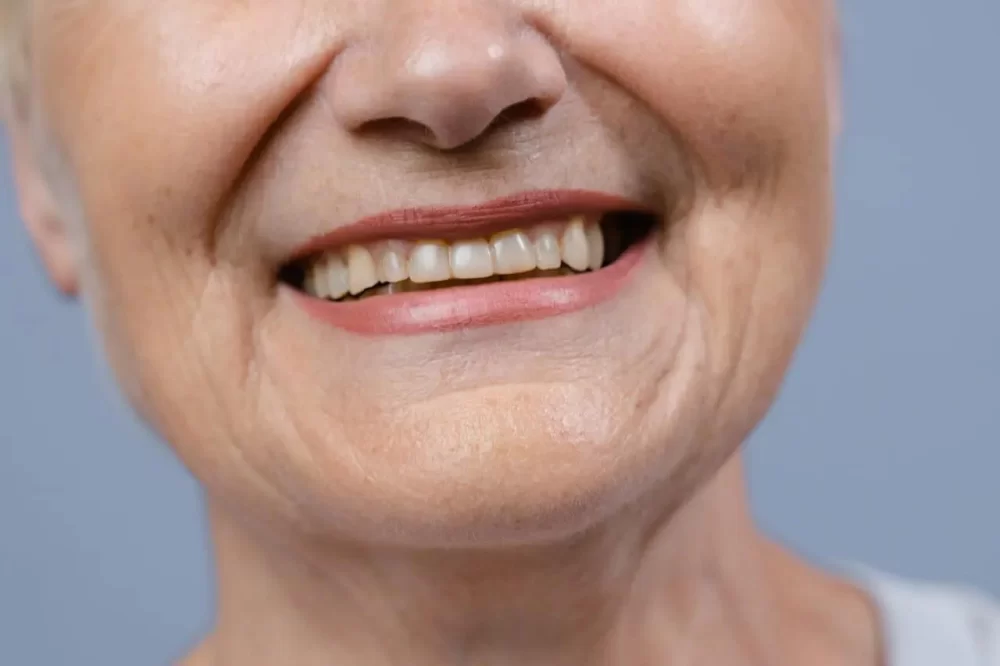
- Causes of Tooth Discoloration After Dental Work
- Types of Discoloration After Dental Procedures
- Solutions for Tooth Discoloration After Dental Work
- Prevention and Maintenance to Avoid Future Discoloration
- Real-Life Examples and Expert Insights
1. Causes of Tooth Discoloration After Dental Work
Tooth discoloration following dental procedures is a surprisingly common concern, often leaving patients puzzled about why their newly treated teeth don’t match the rest of their smile. Understanding the underlying causes is crucial for effective management. Primarily, discoloration after dental work can stem from a variety of sources:
1.1 Materials Used in Dental Treatments
Dental restorations like fillings, crowns, and veneers are made from materials such as composite resin, porcelain, or metal alloys. Some of these materials are prone to staining over time due to their porous nature or chemical composition. For example, composite fillings may absorb pigments from coffee, tea, or tobacco, leading to a noticeable color shift that contrasts with natural teeth.
1.2 Internal Tooth Changes Post-Treatment
Procedures such as root canals can sometimes cause the tooth to darken internally. This is because the tooth is no longer “alive” in the biological sense, and internal changes such as breakdown of blood products or residual dental materials can lead to a grayish or yellowish discoloration.
1.3 Improper Bonding or Sealing
If the bonding agents or sealants used during dental procedures are not applied correctly or degrade over time, staining can occur at the margins where restoration meets natural tooth. This subtle discoloration often appears as dark lines or spots and can worsen if oral hygiene is inadequate.
1.4 Lifestyle and Dietary Factors
Even after flawless dental work, lifestyle habits significantly impact tooth color. Consumption of staining substances like red wine, berries, or strong coffee can discolor restorations and natural teeth alike. Smoking also exacerbates discoloration, often causing uneven staining that makes restored teeth stand out.
2. Types of Discoloration After Dental Procedures
Identifying the specific type of discoloration is key to choosing the right treatment. There are mainly three types:
2.1 Extrinsic Discoloration
This type involves surface stains caused by food, drinks, and smoking. It generally affects the outer layer of restorations and natural teeth and can often be polished away by a dental professional.
2.2 Intrinsic Discoloration
Intrinsic discoloration happens within the tooth structure itself, often from trauma, root canal treatments, or deep staining materials. This type is harder to treat and may require internal bleaching or replacement of restorations.
2.3 Restorative Material Discoloration
Discoloration due to the aging or degradation of dental materials is unique in that it may not respond to conventional whitening methods and might necessitate replacement or refinishing of the affected restoration.
3. Solutions for Tooth Discoloration After Dental Work
Once you’ve identified the cause and type of discoloration, several effective solutions can help restore the natural look of your teeth.
3.1 Professional Dental Cleaning and Polishing
For extrinsic stains, a thorough dental cleaning by a professional can remove surface discoloration safely and quickly. This process not only improves appearance but also promotes oral health.
3.2 Whitening Treatments
Professional whitening, both in-office and at-home kits prescribed by dentists, can lighten teeth affected by intrinsic stains to some extent. However, care must be taken with restorations as whitening agents do not affect artificial materials uniformly.
3.3 Replacement or Refinishing of Restorations
If discoloration stems from old or stained fillings, crowns, or veneers, replacing or refinishing these restorations is often the best approach. Modern materials offer better resistance to staining and improved aesthetic qualities.
3.4 Internal Bleaching for Root Canal-Treated Teeth
Specialized internal bleaching can lighten discolored teeth that have undergone root canal therapy. This method involves placing bleaching agents inside the tooth and is highly effective when performed by experienced dental professionals.
4. Prevention and Maintenance to Avoid Future Discoloration
Prevention is always better than cure. To keep your dental work and natural teeth bright and healthy, consider these tips:
4.1 Maintain Excellent Oral Hygiene
Regular brushing with non-abrasive toothpaste, flossing, and dental check-ups help prevent buildup of plaque and stains.
4.2 Mind Your Diet and Habits
Limiting intake of staining foods and drinks, and avoiding tobacco, can drastically reduce the risk of discoloration. Using a straw for beverages like coffee or tea minimizes direct contact with teeth.
4.3 Choose High-Quality Dental Materials
Discuss with your dentist about the best restorative materials that offer durability and stain resistance. Advanced ceramics and composite resins now provide more natural and long-lasting results.
5. Real-Life Examples and Expert Insights
Consider the case of Maria, a 35-year-old patient who noticed her composite filling darkening after months of frequent coffee drinking. Her dentist at Dentistry Toothtruth recommended a professional cleaning combined with switching to a more stain-resistant composite material during her next restoration update. This tailored approach restored her confidence and smile.
Experts emphasize the importance of early detection and intervention. Dr. Lee, a prosthodontist with over 15 years of experience, notes, “Many patients are unaware that tooth discoloration after dental work is often preventable. Understanding the materials used and practicing proper care can save time, money, and frustration.”
For those looking for personalized advice, product recommendations, or quality dental services to manage tooth discoloration, Dentistry Toothtruth offers a comprehensive range of options tailored to individual needs.







 West Coast Dental of Gage3.0 (1043 review)
West Coast Dental of Gage3.0 (1043 review) Dr. Edwin J Szczepanik, DMD4.0 (321 review)
Dr. Edwin J Szczepanik, DMD4.0 (321 review) Aspen Dental - Philadelphia, PA4.0 (326 review)
Aspen Dental - Philadelphia, PA4.0 (326 review) Dental Crown in an Hour: Naples4.0 (121 review)
Dental Crown in an Hour: Naples4.0 (121 review) Pura Dental Center Kingsbridge4.0 (498 review)
Pura Dental Center Kingsbridge4.0 (498 review) Ethos Dental Group4.0 (37 review)
Ethos Dental Group4.0 (37 review) The Importance of Oral Health Education During Pregnancy for a Healthy Pregnancy
The Importance of Oral Health Education During Pregnancy for a Healthy Pregnancy Best Tips for Brushing Your Teeth Properly for Healthy Gums: Essential Techniques for Oral Health
Best Tips for Brushing Your Teeth Properly for Healthy Gums: Essential Techniques for Oral Health Why Skipping Dental Checkups Can Lead to Bigger Oral Health Problems
Why Skipping Dental Checkups Can Lead to Bigger Oral Health Problems Advantages of Porcelain Dental Restorations
Advantages of Porcelain Dental Restorations How Can Diabetes Cause Tooth and Gum Problems? Preventing and Managing Oral Health Issues
How Can Diabetes Cause Tooth and Gum Problems? Preventing and Managing Oral Health Issues Healthy Habits for Promoting Good Oral Health and Hygiene: Tips for a Healthy Smile
Healthy Habits for Promoting Good Oral Health and Hygiene: Tips for a Healthy Smile